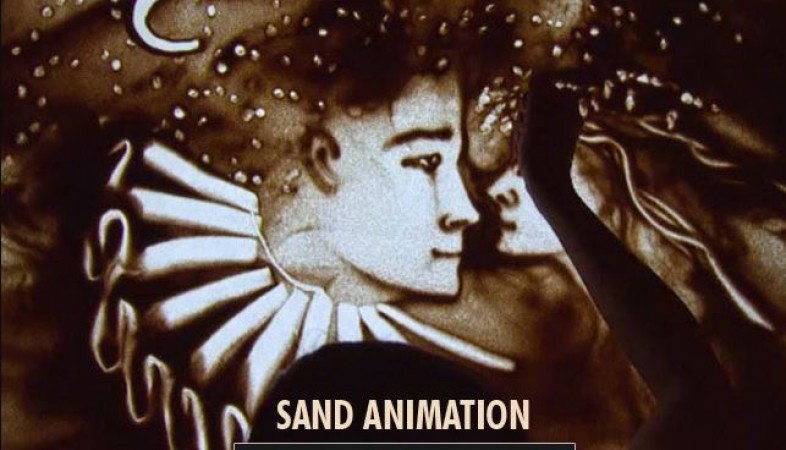
Sand animation is a mesmerizing and unique form of art that has captivated audiences around the world. With just a simple tray of sand and a talented artist's hands, intricate and beautiful narratives come to life. This article delves into the captivating world of sand animation, exploring its history, techniques, and the magic it brings to storytelling.
1. Introduction: The Allure of Sand Animation
Sand animation, also known as sand art or sand painting, is a visual storytelling medium that combines the manipulation of sand with light and shadow to create captivating narratives. Artists use their hands or simple tools to shape and move the sand on a backlit surface, bringing characters, scenes, and emotions to life.
2. The Origins of Sand Animation
Sand animation has a rich history that dates back centuries. Its origins can be traced to ancient cultures such as Native American tribes and Tibetan monks, who used sand to create intricate mandalas as a form of meditation and spiritual practice. Over time, sand animation evolved and gained recognition as a unique art form.
3. Tools and Techniques
To create sand animations, artists require a few essential tools. The primary tool is a flat surface or lightbox, which allows the sand to be illuminated from beneath. The sand itself can be colored or natural, and its texture can vary depending on the desired effect. Artists manipulate the sand using their hands, brushes, or other tools like spoons or sticks.
4. Creating a Sand Animation: Step-by-Step Guide
Creating a sand animation involves several key steps:
Step 1: Planning and Storyboarding
The artist begins by conceptualizing the narrative and developing a storyboard. This step helps outline the sequence of events and ensures a coherent and engaging story.
Step 2: Preparing the Lightbox
The artist sets up the lightbox or flat surface and ensures proper lighting to enhance the sand's visual impact.
Step 3: Shaping the Sand
Using their hands or tools, the artist skillfully manipulates the sand on the lightbox. They can create and transform characters, landscapes, and various objects.
Step 4: Capturing the Animation
The sand animation is recorded using a camera or a video recording device. This step preserves the artwork and allows it to be shared with a wider audience.
5. The Magic of Sand Animation in Storytelling
Sand animation has a unique ability to evoke emotions and tell stories in a captivating way. The fluidity and malleability of sand allow artists to create seamless transitions between scenes, adding a touch of magic to the storytelling process. The visual elements, combined with music and narration, create a multisensory experience that engages and enchants the audience.
6. The Impact of Sand Animation in Popular Culture
Sand animation has made its mark in popular culture, with several notable artists gaining recognition for their exceptional talent. Their performances, often accompanied by live music or dramatic lighting, have graced stages in theaters, television shows, and even international competitions. Sand animation's enchanting qualities have also been featured in music videos, commercials, and films, further expanding its reach.
7. Sand Animation as a Therapeutic Medium
Beyond entertainment, sand animation has found applications in therapy and self-expression. Its tactile nature provides a therapeutic outlet for individuals to convey their emotions and stories without relying on words. Sand animation therapy has been particularly beneficial for individuals dealing with trauma, as it offers a safe and creative space for expression and healing.
8. Sand Animation in the Digital Age
Advancements in technology have opened up new possibilities for sand animation. Artists can now combine traditional techniques with digital tools to create visually stunning and immersive experiences. Digital sand animation allows for intricate details, vibrant colors, and precise control over the animation process. This fusion of traditional and digital mediums ensures the art form continues to evolve and captivate audiences.
9. The Future of Sand Animation
As sand animation gains recognition worldwide, its future looks promising. The art form continues to inspire new generations of artists and storytellers. With the advent of social media platforms and online video sharing, sand animations can now reach a global audience, allowing more people to experience the enchantment and wonder of this unique art form.
10. Conclusion
Sand animation is a captivating art form that combines storytelling, visuals, and the tactile nature of sand to create mesmerizing narratives. From its ancient roots to its modern-day applications, sand animation continues to evolve and inspire. Whether used for entertainment, therapy, or self-expression, it carries a magical quality that captivates audiences and transcends language barriers.
Rahul Gandhi Demonstrates Solidarity with Farmers by Riding a Tractor in Sonipat
Remembering the Legendary Dilip Kumar: A Tribute on His Death Anniversary